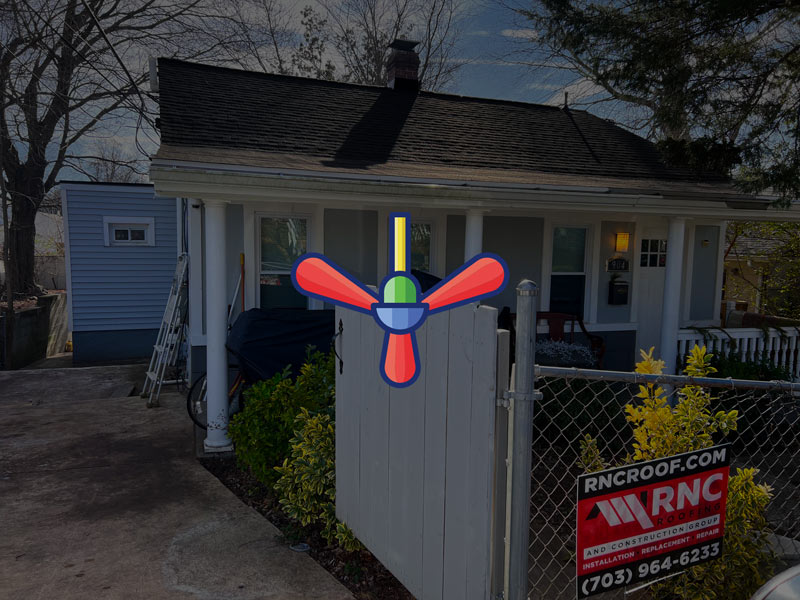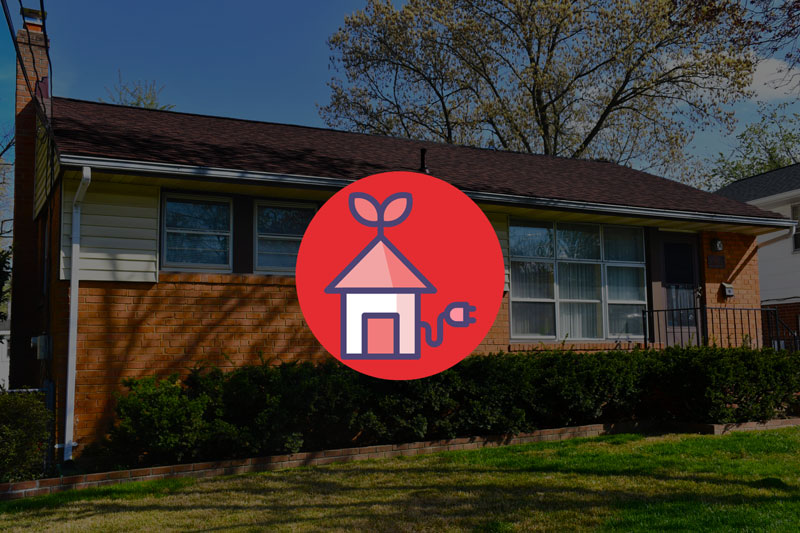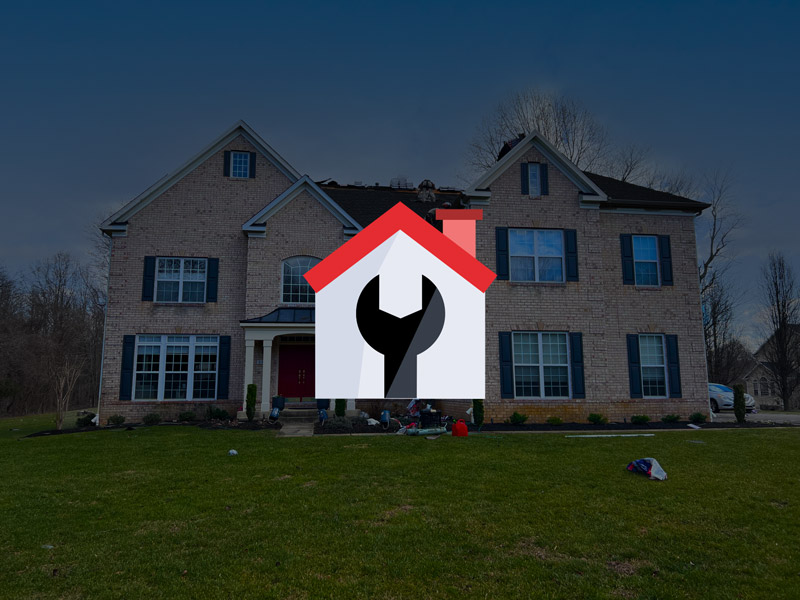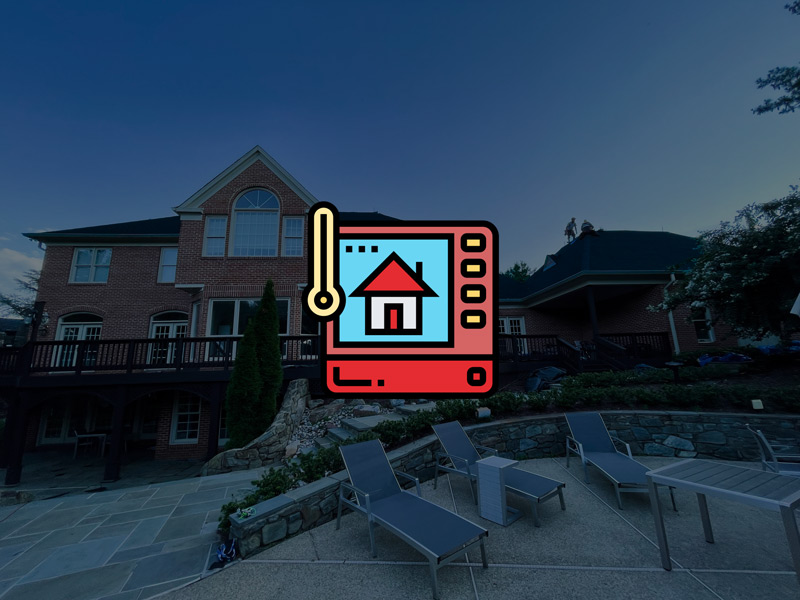Roof Ventilation: Tips for a Leak-Free Roof | By RNC
Proper roof ventilation is essential for preventing and addressing leak-related problems. When moisture accumulates in the attic due to poor ventilation, it can seep into the roof materials, causing them to deteriorate over time. This degradation weakens the roof’s integrity, making it more susceptible to leaks during heavy rain or snow.By ensuring adequate roof ventilation, you create a balanced airflow system that helps to reduce the chances of moisture buildup and subsequent leaks. The movement of air helps to dry out any accumulated moisture, preventing it from causing damage to the roof’s structure.

Different Types of Roof Ventilation Systems
Ridge Vents: These are installed along the ridge of the roof, allowing hot air to escape from the attic. Ridge vents are designed to blend with the roofline and provide a continuous airflow path.
Soffit Vents: These vents are installed in the soffit area, typically under the eaves of the roof. Soffit vents allow fresh air to enter the attic space, facilitating air circulation and preventing the buildup of heat and moisture.
Gable Vents: Gable vents are located in the gable ends of the attic walls. They promote cross-ventilation by allowing air to enter through one vent and exit through another, creating a flow of air within the attic.
Turbine Vents: These vents use wind power to drive the movement of air. As wind blows, it spins the turbine, creating a suction effect that draws air out of the attic.
How Roof Ventilation Works to Maintain a Healthy Roof
Proper roof ventilation works through a combination of intake vents (such as soffit vents) and exhaust vents (such as ridge vents or turbines). The intake vents allow cool, fresh air to enter the attic, while the exhaust vents facilitate the expulsion of hot, stale air.As the cool air enters through the intake vents, it pushes out the warm air through the exhaust vents, creating a continuous flow of air within the attic space. This airflow helps to regulate temperature by preventing heat buildup and promoting cooling.

Signs of Poor Roof Ventilation
High Indoor Temperatures and Excessive Heat
One of the signs that your roof ventilation may be inadequate is high indoor temperatures and excessive heat. During hot summer months, a poorly ventilated roof can trap heat in the attic, causing it to radiate into the living spaces below. This can make your home uncomfortably warm and lead to increased reliance on air conditioning, resulting in higher energy bills.
Condensation and Moisture Issues
Another indication of poor roof ventilation is the presence of condensation and moisture issues. Inadequate airflow can cause moist air to become trapped in the attic, leading to condensation on surfaces such as rafters or insulation. Over time, this moisture can promote the growth of mold and mildew, which not only affects the health of your roof but can also pose a risk to your overall well-being.
Mold Growth and Health Concerns
Mold growth is a serious problem that can result from poor roof ventilation. When warm, moist air lingers in the attic, it creates an ideal environment for mold spores to thrive. As mold grows, it releases airborne particles that can be inhaled and cause respiratory issues, allergies, or even more severe health problems. Regularly checking for signs of mold, such as musty odors or discoloration on the ceiling or walls, is crucial for maintaining a healthy living environment.
Premature Roof Aging and Structural Damage
Poor roof ventilation can contribute to premature aging and structural damage to your roof. Excessive heat and trapped moisture can accelerate the deterioration of roofing materials, leading to issues like shingle curling, warping, or even rotting. These problems weaken the roof’s structure, making it more susceptible to leaks, water damage, and overall reduced longevity.

Benefits of Proper Roof Ventilation
Improved Energy Efficiency
Proper roof ventilation offers significant benefits in terms of energy efficiency. By allowing hot air to escape from the attic during summer and preventing the buildup of moisture in winter, a well-ventilated roof helps to regulate temperature extremes. This means your HVAC systems won’t have to work as hard to maintain a comfortable indoor climate, resulting in potential energy savings and reduced utility costs.
Extended Roof Lifespan
An adequately ventilated roof can have a longer lifespan compared to a roof without proper ventilation. Heat buildup in the attic can accelerate the aging process of roofing materials, causing premature deterioration. However, with effective ventilation, the temperature is controlled, reducing the expansion and contraction of the roof components. This helps to minimize the stress on the roof and extends its overall lifespan.
Prevention of Mold and Moisture-related Issues
Proper roof ventilation plays a crucial role in preventing mold and moisture-related problems. When warm, moist air becomes trapped in the attic, it creates an environment conducive to mold growth. By promoting airflow and allowing moisture to escape, ventilation helps to keep the attic dry and discourages the growth of mold and mildew. This safeguards not only the structural integrity of your roof but also the health of the occupants.
Enhanced Indoor Air Quality
Roof ventilation contributes to better indoor air quality by reducing the concentration of pollutants and allergens. When stale air and pollutants accumulate in the attic, they can seep into the living spaces below. Adequate ventilation helps to remove these contaminants and replace them with fresh air, creating a healthier living environment for you and your family.
Savings on Heating and Cooling Costs
Proper roof ventilation can lead to savings on heating and cooling costs throughout the year. During summer, ventilation helps to expel hot air, reducing the need for excessive air conditioning. In winter, it prevents the buildup of moisture, which can cause insulation to lose its effectiveness and lead to higher heating expenses. By maintaining a well-ventilated roof, you can optimize your energy usage and potentially save on utility bills.

Common Roof Ventilation Problems and Solutions
Inadequate Ventilation: Causes and Remedies
Inadequate roof ventilation can lead to a variety of issues, including poor temperature regulation, moisture buildup, and reduced energy efficiency. Some common causes of inadequate ventilation include an insufficient number of vents, improper vent sizing, or blocked air pathways. To remedy this problem, it is essential to assess the ventilation needs of your specific roof and make the necessary adjustments. This may involve adding more vents, ensuring proper vent placement and sizing, or installing additional airflow-enhancing features such as ridge vents or soffit vents.
Blocked or Clogged Vents:
Blocked or clogged vents can significantly impair the effectiveness of roof ventilation. Debris, such as leaves, twigs, or animal nests, can accumulate and obstruct the vents, preventing proper airflow. Regular inspections and maintenance are key to identifying and addressing these issues. If you notice reduced airflow or suspect a blockage, carefully remove the obstruction and clear the vent opening. Consider installing vent covers or screens to prevent future blockages while still allowing air to flow freely.
Improper Ventilation Installation:
Improper installation of roof ventilation can undermine its functionality and lead to various problems. Issues may include incorrect vent placement, improper sealing around vents, or insufficient insulation around the vent openings. To troubleshoot these problems, it is advisable to consult a professional roofing contractor who can assess the installation and recommend appropriate solutions. In some cases, it may be necessary to reposition or reinstall the vents, apply proper sealing techniques, or improve insulation to ensure optimal ventilation performance.

Maintaining and Upgrading Roof Ventilation Systems
Regular Inspections and Maintenance Practices
Regular inspections and maintenance are crucial for ensuring the proper functioning of your roof ventilation system. It is recommended to inspect your roof and vents at least once a year, preferably during spring or fall. During the inspection, check for any signs of damage, blockages, or deterioration. Clear away debris, such as leaves and branches, from the vents and ensure that airflow is unobstructed. Additionally, inspect the surrounding flashing and seals to identify any potential leaks or gaps that could compromise the ventilation system. By addressing issues promptly, you can prevent larger problems from arising and maintain optimal roof ventilation.
Upgrading and Retrofitting Roof Ventilation Systems
Over time, advancements in roof ventilation technology may provide more efficient and effective solutions. If you have an older roof ventilation system, it might be worth considering an upgrade or retrofit. Upgrading to newer models with improved features, such as solar-powered vents or smart ventilation systems, can enhance the overall performance and energy efficiency of your roof ventilation. Consult with a professional roofing contractor to determine the most suitable options for your specific needs and budget.
Hiring Professional Roofing Contractors for Ventilation Issues
In some cases, roof ventilation issues may require the expertise of a professional roofing contractor. If you encounter persistent problems or suspect significant ventilation issues, it is advisable to seek professional assistance. A skilled contractor can assess your roof ventilation system, identify any underlying issues, and provide appropriate solutions. Whether it’s diagnosing and fixing ventilation-related leaks, recommending upgrades, or ensuring proper installation, the expertise of a professional can save you time, effort, and potential costly mistakes.
View More Articles
Please Share!











